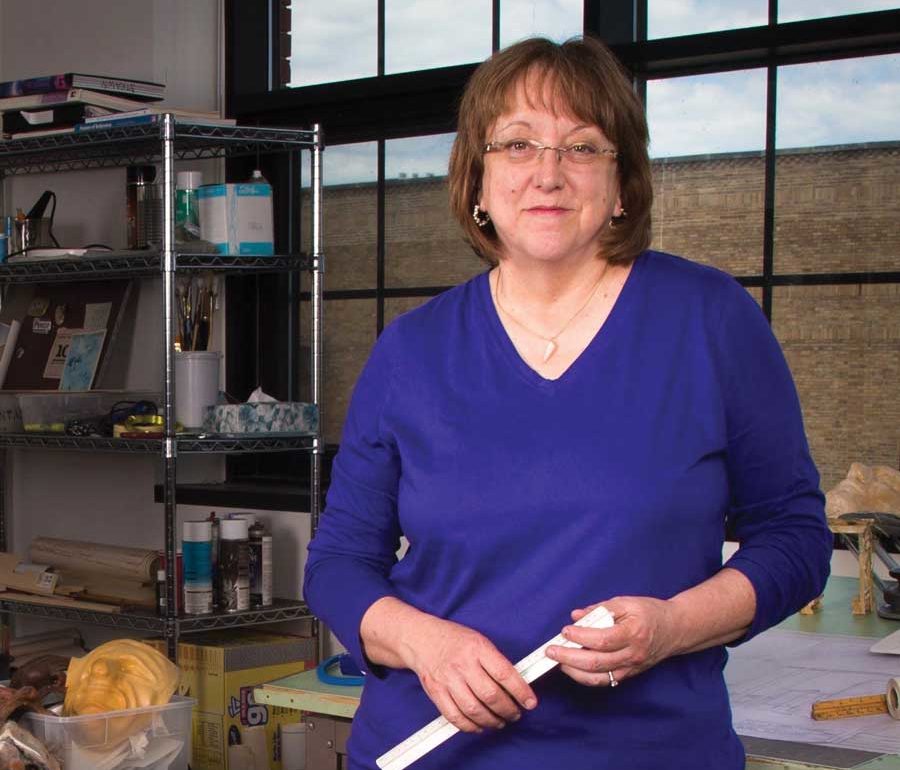Wisconsin-based artist Sandra J. Strawn is quick to point out that she’s a properties director—not properties designer, and certainly not a properties master (though many people think the terms are synonymous). “I realize that some people think it means you are a master of your trade, but the patriarchy of that term is offensive to many of us who are female,” says Strawn. Her book The Properties Director’s Handbook has helped shape the language around the profession and pave the way for more theatre artists to find their way to power tools.
When Strawn was starting out, there were no ladies running scene shops. In fact, there weren’t many women behind the scenes anywhere. “Everybody else was male, it was foreign territory for a lot of us,” she recalls. “You could work your way in, but it takes a special personality to do that. And somebody who really has a backbone—those are the women who rose, those are the people who became the props directors.”
Strawn rose. She cut her teeth as a scenic artist and as an assistant working at large regional houses: Kentucky’s Actors Theatre of Louisville, Milwaukee Repertory Theater, and First Stage in Milwaukee. She learned on the job, then took her experience to the classroom at the University of Wisconsin-Milwaukee, where she was head of production for the theatre department for 27 years. When she started, there were no textbooks outlining the skills needed to be a successful properties director—so she wrote one. Props directing is “all about creativity, communication, and collaboration; that is the backbone of your job as a props director, and that is the thing that is tough to teach.”
What began as a website featuring photos of scenic shops, checklists for properties directors, and how-to guides for production has become a bible of sorts for theatre artists working with props.
“Sandy is an amazing force of a woman,” says Jennifer M. Higgins, a former student who is now on staff at Milwaukee Rep. “The perfectionism, patience, no-nonsense, and joy, which seem so opposing to each other, that she brings to her work and her students are astonishing.”
Strawn says the best part of the job is that it is unpredictable and full of joy. Throughout her decades-long career she’s had to procure snakes, handle a working barbecue, oversee a car demolition onstage, and craft countless blood packs. “Blood is the bane of our existence,” she laments. “But it is also kind of fun!”
Though she’s currently two years into retirement, she still advises on projects and mentors up-and-coming properties directors. “I’m mentoring a whole group of young women who are coming through,” she effuses. “There is an astonishing number of young women now in the Society of Properties Artisan Managers.”
She has also shifted her focus to her former mentor, designer Paul Owen. Strawn is writing a book that will pair the history of the U.S. resident theatre movement with that of Owen’s career, including decades of work at the Humana Festival of New American Plays at Actors Theatre.
Properties directing is about making ideas come to life “in a collaborative, supportive, creative way,” she explains. “And that’s what Paul Owen taught me, and what I subsequently taught all of the students who walked through my door, because I think that is the heart of theatre. Joyous creation with a group of people who are trying to really make something onstage.”


